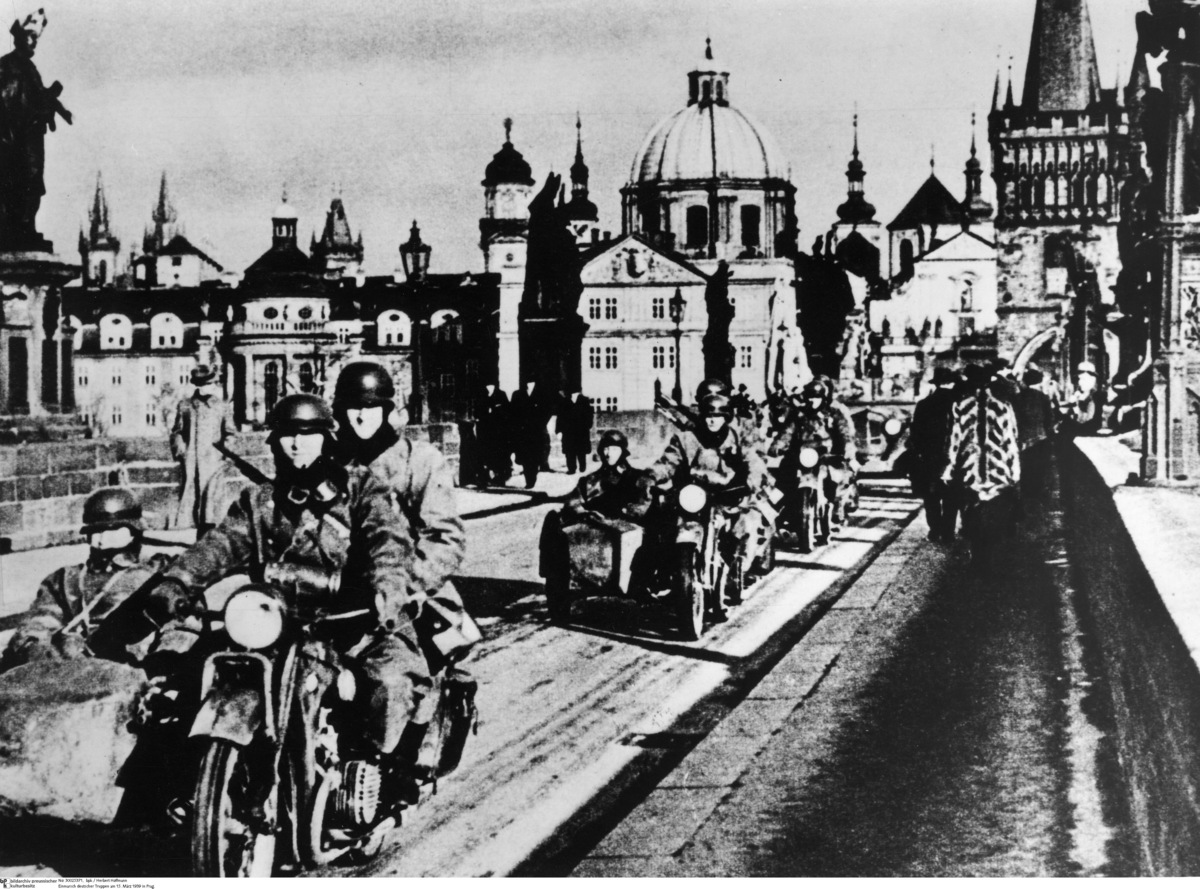Abstract
While Hitler was declaring his peaceful intentions after the Munich
Agreement, he was also planning the “liquidation of rump
Czechoslovakia.” Here, Hitler’s primary objectives included improving
Germany’s strategic and economic position to better prepare for a later
attack on Poland and the Soviet Union. On October 21, 1938, he gave the
Wehrmacht the first instructions to prepare for an eventual attack on
Czechoslovakia. When a conflict of interests between the Czechs and the
Slovaks threatened to escalate in the spring of 1939, Hitler used the
situation to carry out his plans. On March 14, 1939, under pressure from
Hitler, the Slovak leadership declared its national independence and
asked for German “protection” against the Czech opposition. At the same
time, Hitler threatened to invade Czechoslovakia and bomb Prague if
Czech President Emil Hacha opposed his will. Hacha signed a treaty
establishing a protectorate and ordered his army not to resist the entry
of German troops on March 15, 1939. On the following day, Hitler
announced the incorporation of “rump Czechoslovakia”
[Rest-Tschechei] into the Greater
German Reich as the “Reich Protectorate of Bohemia and Moravia.”
Slovakia gained nominal independence as a German satellite state.
Although France and Great Britain (who had assumed responsibility for
protecting Czechoslovakia under the Munich Agreement) did not intervene,
their attitude toward the German Reich changed dramatically. Chamberlain
officially announced the end of his “appeasement policy,” since Hitler’s
goal was obviously not to revise the Versailles Treaty but rather to
achieve hegemonic supremacy. On March 29, 1939, Chamberlain guaranteed
British aid to Poland in the event of a German attack.
The photograph shows a German motorcycle division on the famous
Charles Bridge in the heart of Prague’s historic city center.
